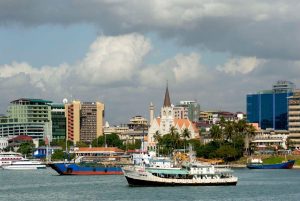Every time an incident happens in the aviation industry, whether locally or internationally, it becomes a subject of concern to everybody. Understandably so because of the fatalities that are associated with air incidents.
Over the past eight years, Kenya has recorded slightly above 100 minor and fatal aircraft incidents. This, according to government data, includes records from pilot training flights, commercial passenger flights, cargo flights and private aircraft.
At least 37 of the recorded incidents occurred on the runway during take-off and landing, as a result of faulty landing aircraft gear, runway intrusions or aircraft overshooting the runways. Engine failure contributed to about 22 of the incidents recorded. Aircraft crashes into obstacles contributed to 50 percent of the fatalities.
Despite this, Air transport is still by far the safest mode of transport. The 2018 International Air Transport Association (IATA) safety performance data showed that there was one accident for every 740,000 flights globally, which was a slight improvement from the previous five-year period 2013-2017.
Kenya has seen an upward trajectory in its air safety record in the last ten years. The country now ranks 7th in Africa and 67 out of 185 states globally, in air safety. The country’s safety score stands at 78 percent.
This rating by the International Civil Aviation Organisation (ICAO) shows that there is a deliberate effort by the sector to improve safety standards. ICAO categorises a country’s air safety based on civil aviation organisation, aviation legislation, air navigation services, aircraft operations, personnel licensing and training, aircraft airworthiness and air crash investigations.
In the last few years, we have seen a rise in low-cost carriers here in Kenya, making air travel more affordable. For instance, with Jambojet, we have flown over 3 million passengers over the last five years, equivalent to the total population in Nairobi. At least 30 percent of these were first time flyers. The important question to ask is how we as an industry should enhance safety and reliability.
First we are regulated. Each of the industry players should adhere to the set regulations, and this would work towards safer skies, and a better operating environment. Jambojet like every other airline has elaborate operating manuals that we strictly adhere to.
Secondly we have to be transparent and open to scrutiny. For example we at Jambojet have opened up our operations to scrutiny by the regulator and our partners Kenya Airways, KLM and Air France. Recently we received the IATA Operational Safety Audit registration, becoming the second airline in Kenya after Kenya Airways to receive this certification and the only low cost carrier to be certified.
Finally, we are safe as we want to be. It does not matter how much the regulators try to regulate us. It boils down to individual responsibility by airlines. As operators, we must be responsible and adhere to the set guidelines.
We must also have continuous training for all staff on safety and security. This not only raises the awareness but also ensures that we are prepared at any.
The writer is managing director & CEO, Jambojet. Source: https://www.businessdailyafrica.com/analysis/columnists/Safe-skies-is-a-joint-responsibility/4259356-5235792-ijtr3e/index.html



